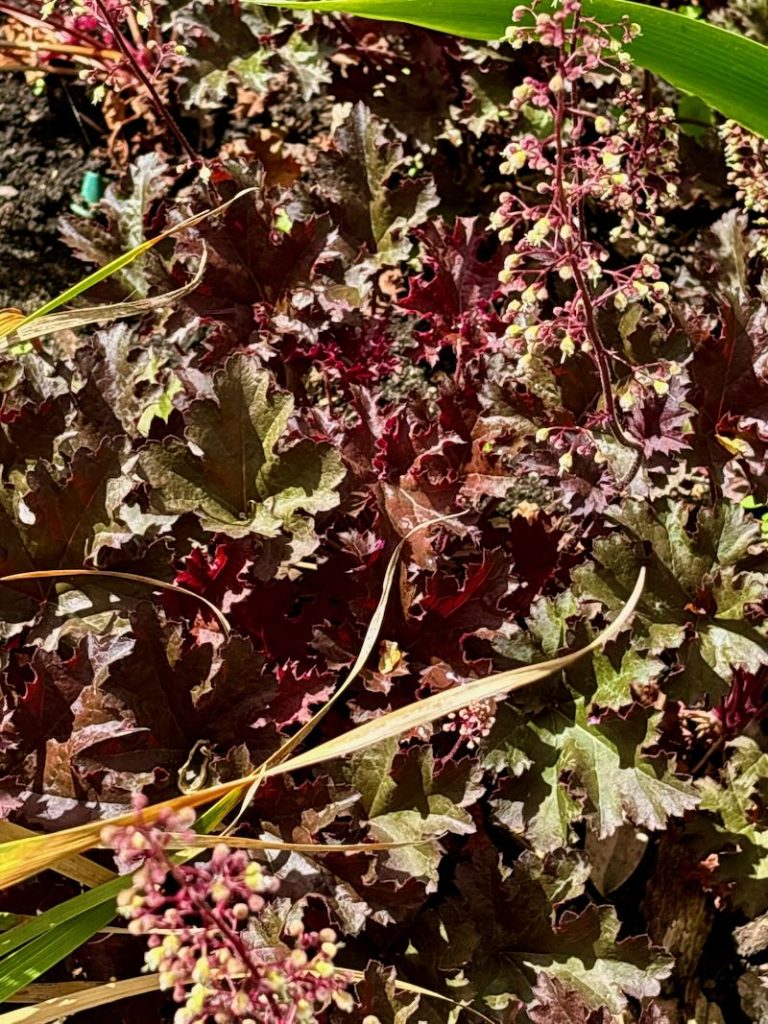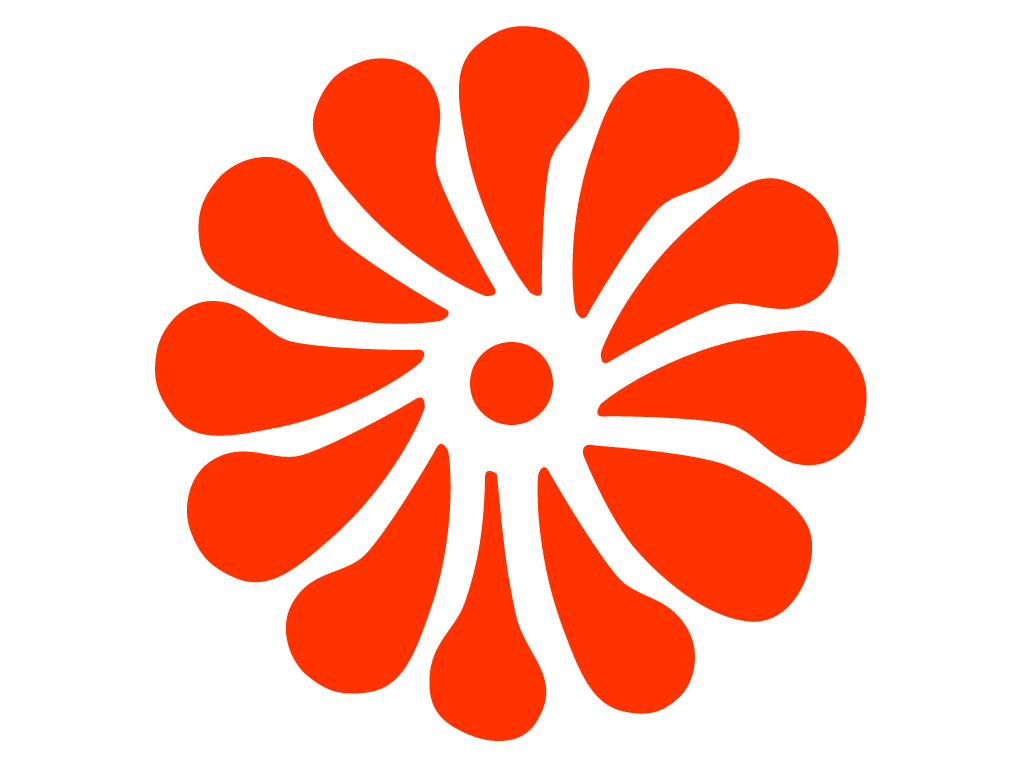Heuchera ‘Purple Petticoats’: The Bold Coral Bells for Year-Round Garden Interest
Heuchera ‘Purple Petticoats’, commonly known as Coral Bells, is a striking herbaceous perennial that offers vibrant, deeply ruffled purple foliage and delicate whitish flowers. Belonging to the Saxifragaceae family, this cultivar is cherished for its colorful leaves that persist throughout much of the year and its elegant, airy flower spikes. It thrives in USDA zones 4 to 9, growing to about 1 to 2 feet (30–60 cm) tall and wide, making it a perfect choice for borders, rock gardens, and woodland settings where shade and moisture are moderate.
Botanical Background of Heuchera ‘Purple Petticoats’
Heuchera, commonly called Coral Bells or alumroot, is a diverse genus of about 55 species native primarily to North America. These species occupy a variety of habitats, from cool, moist woodlands to rocky alpine slopes. The adaptability of Heuchera species to different environments has made them valuable parents in hybridization, resulting in a wide array of garden cultivars.
‘Purple Petticoats’ is a hybrid cultivar introduced by Terra Nova Nurseries. It is well known for its dense clumps of ruffled dark purple leaves with contrasting crimson undersides. These dramatic leaves provide a rich tapestry of color and texture that makes the plant stand out in any garden.
The Saxifragaceae family, to which Heuchera belongs, contains mostly herbaceous plants often found in temperate regions. Members of this family generally prefer cool, moist habitats and frequently feature colorful foliage and delicate flowers.
The genus name Heuchera honors Johann Heinrich von Heucher (1677–1747), a German physician, botanist, and expert in medicinal plants. The common name “coral bells” references the bell-shaped red flowers of Heuchera sanguinea, a related species. Meanwhile, “alumroot” derives from the historical use of some Heuchera species as a natural astringent for stopping bleeding.
Detailed Foliage and Flower Description
The defining feature of Heuchera ‘Purple Petticoats’ is its vibrant, deeply ruffled foliage. The rounded, lobed leaves form a dense basal mound about 30 cm (12 inches) tall and spread 45–60 cm (18–24 inches) wide. The solid dark purple color remains vibrant year-round in many climates, with the cool weather of fall and winter often intensifying the hue. The crimson undersides of the leaves add a subtle yet beautiful contrast, especially when viewed from different angles or in breezes that reveal the undersides.
The Coral Bells plant produces airy panicles of small, bell-shaped, whitish flowers on wiry stems that rise 60–70 cm (24–28 inches) above the foliage. These flowers bloom from late spring to early summer. Though less showy than the foliage, they provide a delicate textural contrast and attract pollinators such as bees and hummingbirds, contributing to the garden’s ecological health.
How to Grow Heuchera ‘Purple Petticoats’
Light Requirements
Heuchera ‘Purple Petticoats’ grows best in full sun to part shade. In cooler climates, full sun exposure encourages vibrant leaf color and robust growth. However, in warmer southern zones, some afternoon shade protects leaves from sun scorch and heat stress, preserving their rich purple tones.
You should aim to provide at least 4 to 6 hours of filtered or direct sunlight daily. In excessively hot climates, dappled shade or morning sun with afternoon shade works best.
Soil Preferences
This cultivar prefers organically rich, humus-rich, medium moisture, and well-drained soils. It thrives when planted in soils amended with compost or aged organic matter. Heavy clay soils should be improved with coarse sand or organic amendments to ensure good drainage and prevent root rot.
The ideal soil pH for Heuchera ‘Purple Petticoats’ is slightly acidic to neutral, ranging from 6.0 to 7.0. Testing and adjusting soil pH, if necessary, can enhance nutrient uptake and overall plant health.
Watering Needs
Maintain consistent soil moisture, especially during the growing season. Water deeply once or twice a week during dry spells, ensuring the soil remains evenly moist but not waterlogged. Mulching helps retain moisture and moderate soil temperature, especially in summer.
Avoid overhead watering to reduce fungal diseases; instead, water at the soil level using drip irrigation or a soaker hose.
Fertilization Practices
Feed Heuchera ‘Purple Petticoats’ with a balanced, slow-release fertilizer in early spring. A fertilizer with an NPK ratio of approximately 10-10-10 is effective. You may also top-dress with compost to provide nutrients naturally.
Avoid over-fertilizing, which can cause excessive leaf growth at the expense of flower production. Supplement with a liquid fertilizer during mid-summer if growth appears sluggish.
Pruning and Deadheading
Remove any dead or damaged leaves throughout the growing season to maintain tidy appearance and encourage fresh growth. Deadhead flower stalks after bloom to promote further flowering and prevent seed formation, which can sap the plant’s energy.
In late fall or early spring, prune back old foliage to just above the crown to refresh the plant and encourage vigorous new leaves.
Division and Propagation
To maintain plant vigor, divide Heuchera ‘Purple Petticoats’ every 3 to 4 years. Divide clumps in early spring before new growth starts or in early fall after flowering finishes.
Dig up the entire clump carefully, then separate it into smaller sections with roots and shoots. Replant divisions at the same soil depth and water thoroughly. This method preserves the hybrid’s exact characteristics.
Propagation by seed is generally reserved for species plants, as hybrids like ‘Purple Petticoats’ do not breed true from seed.
Pests and Disease Management
Though generally low-maintenance, Heuchera ‘Purple Petticoats’ can be vulnerable to several pests and diseases.
- Powdery Mildew: A white, powdery fungal growth that appears on leaves, often during humid conditions or poor air circulation. Prevent by spacing plants adequately and watering at the soil line.
- Rust and Bacterial Leaf Spot: These diseases cause discoloration and spotting on foliage. Remove infected leaves and apply appropriate fungicides if necessary.
- Foliar Nematodes: Microscopic worms that cause leaf streaking and damage. Avoid overhead watering and remove affected leaves.
- Weevils: Adult beetles may feed on foliage; larvae can damage roots. Beneficial nematodes or insecticidal treatments can manage infestations.
Good cultural practices like adequate spacing, proper watering, and sanitation minimize problems.
Environmental Tolerances and Hardiness
Heuchera ‘Purple Petticoats’ is hardy in USDA zones 4 to 9. It tolerates cold winters with protection such as a winter mulch to prevent frost heaving. The plant prefers moderate moisture and will not thrive in drought or excessively wet soils.
While it prefers partial shade in hot climates, it can grow in full sun in cooler areas. Its tolerance for different light and soil conditions makes it a versatile garden performer.
Garden Uses and Landscape Value
This cultivar excels in mass plantings or grouped in borders and rock gardens. Its colorful, textured foliage adds visual interest even when not in bloom. Use it as a striking edging plant along pathways or in woodland gardens where dappled light prevails.
Heuchera ‘Purple Petticoats’ also works well in containers, providing a splash of deep color. Use well-drained potting mix and water more frequently than in-ground plants, especially in warm weather.
Its flowers support pollinators, making it a valuable addition to wildlife-friendly gardens.
Seasonal Care Tips for Heuchera ‘Purple Petticoats’
- Spring: Remove winter mulch, prune back old foliage, and apply balanced fertilizer.
- Summer: Water regularly, deadhead spent flowers, and monitor for pests.
- Fall: Divide overcrowded clumps if needed and apply mulch for winter protection.
- Winter: Apply a protective mulch in cold zones to prevent frost heaving.
Conclusion
Heuchera ‘Purple Petticoats’ or Coral Bells is a versatile, colorful perennial that brightens gardens year-round with its deeply ruffled purple foliage and delicate whitish flowers. A member of the Saxifragaceae family, it thrives in partial shade with well-drained, organically rich soil. Its low to medium maintenance needs, adaptability, and pest resistance make it a favorite among gardeners seeking long-lasting garden texture and color.
Plant it in borders, rock gardens, or containers. Water moderately, fertilize lightly, prune regularly, and divide every few years to keep the clumps vigorous and attractive. This coral bells cultivar will reward you with bold color, architectural form, and pollinator-friendly blooms season after season.



